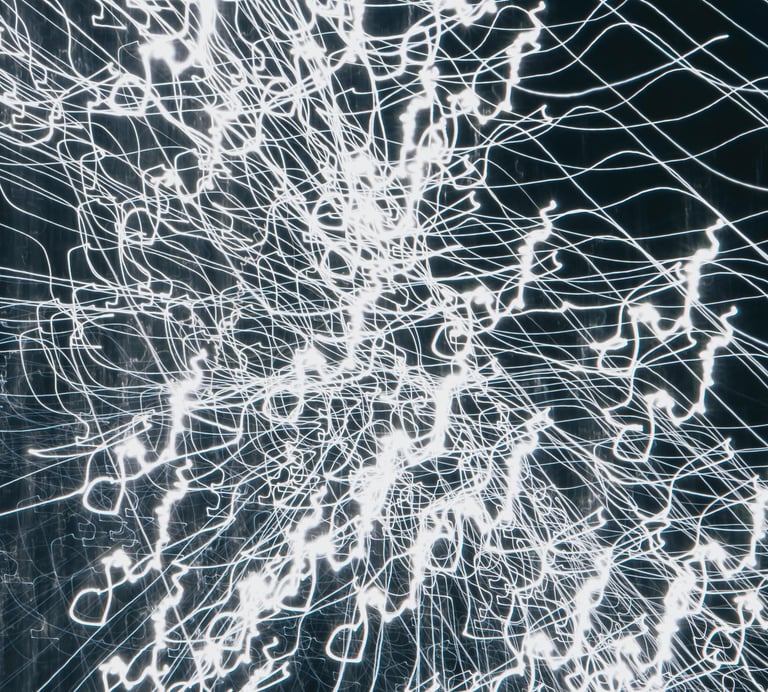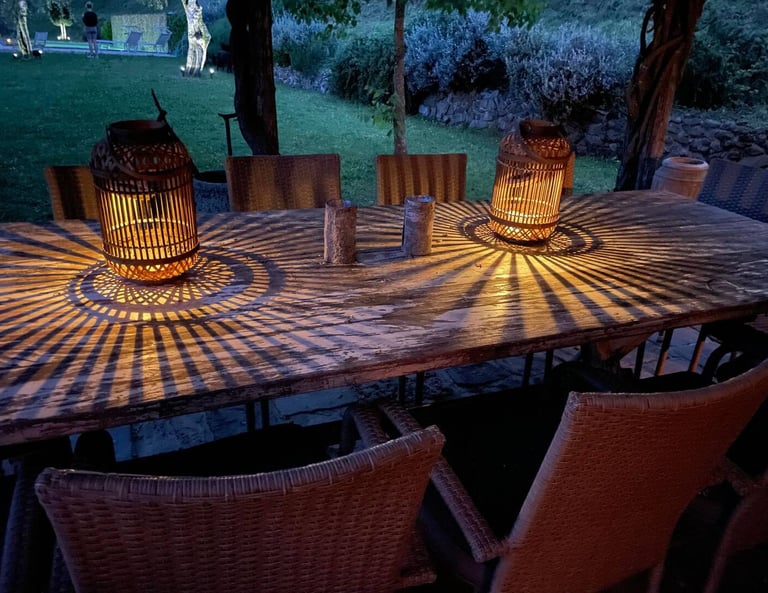Interference Matters
Lines of Listening: A Somatic Series on How We Hear, Move, and Understand
Mike O'Connor
5/13/20253 min read
We’re trained to value straightness — not just in how we move through the world, but in how we think, speak, and listen. To be “straightforward” is to be clear. “Don’t talk in circles.” “Get to the point.” Our language is filled with spatial metaphors that treat straightness as correctness.
Linguist Alan Cienki explains that these ideas are embedded in our bodily understanding. He writes that we associate straightness with strength, clarity, and logical thought. In contrast, bent or curved lines suggest softness, complication, or even dishonesty. “Wrong is not straight,” he notes, and “logical thought is straight” (Cienki, 1998, pp. 110–122). These metaphors structure how we understand language — and how we decide what kind of listening counts.
But what happens when listening isn’t linear?
Non-Straight Listening
In my work with movement and sound, I’ve been drawn to interference — moments when things don’t align, when language fragments, or when a thought arrives out of sequence. This isn’t a breakdown. It’s a different kind of attention. Instead of always expecting language to make immediate sense, we can start to track something else — not just what’s being said, but how it moves.
Think of a conversation where the words don’t quite match the energy behind them. Or a voice that cracks slightly before it answers. Or someone pausing mid-thought, circling back, searching. These moments don’t follow a straight communicative line. But they often carry more meaning than polished speech.


We begin to listen differently — not just to content, but to tone, rhythm, and space. A sentence fragment can evoke an image: “a piece of elastic being pulled from different directions,” or “pullings on a center.” These phrases aren’t logically linked, but they live in the same sensory field. The body understands something — tension, imbalance, desire — even if the grammar doesn’t explain it.
This kind of listening demands more of us — not because it’s confusing, but because it’s layered. The practice becomes diffractive rather than reflective. As Donna Haraway writes, “A diffraction pattern does not map where differences appear, but rather maps where the effects of difference appear” (1992, p. 300). Interference isn’t noise — it’s meaning in motion. It’s how differences collide, overlap, or ripple through each other.
In queer, artistic, and neurodivergent experience, interference is familiar. It’s the experience of not speaking in the expected rhythm, of thinking sideways, of communicating in nonlinear loops. And rather than pathologize this, interference can become a practice — a way of listening that embraces complexity.
This is where non-straight listening begins to take form. It's not simply the opposite of linear or logical listening — it’s listening that allows for many directions at once. Listening that follows a curve, that loses track and finds a new one, that allows language to echo, misalign, or arrive late.
Queering Comprehension
Through embodied language and image schemas, we can find common ground between Cienki’s not-straight and Haraway’s nuanced idea of interference and diffraction in that they both produce multiplicities of possible differences: there are many ways to sense and respond. And while our dominant systems favor straightness — for speed, simplicity, or control — our bodies, stories, and relationships don’t always work that way.
In fact, they rarely do.
Listening that allows interference — sensing more than what is said—opens space for difference — not distortion. It allows us to stay with what doesn’t resolve quickly, to sense meaning as it forms, rather than demand it be delivered. Interference, then, is not interruption — it’s invitation. It invites us to attend to where something new might begin.


